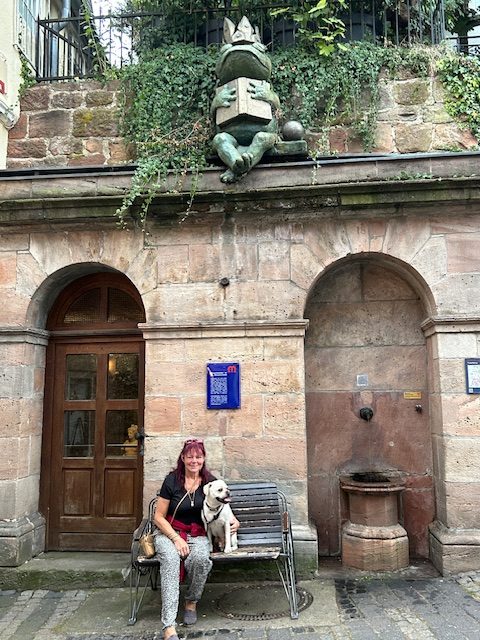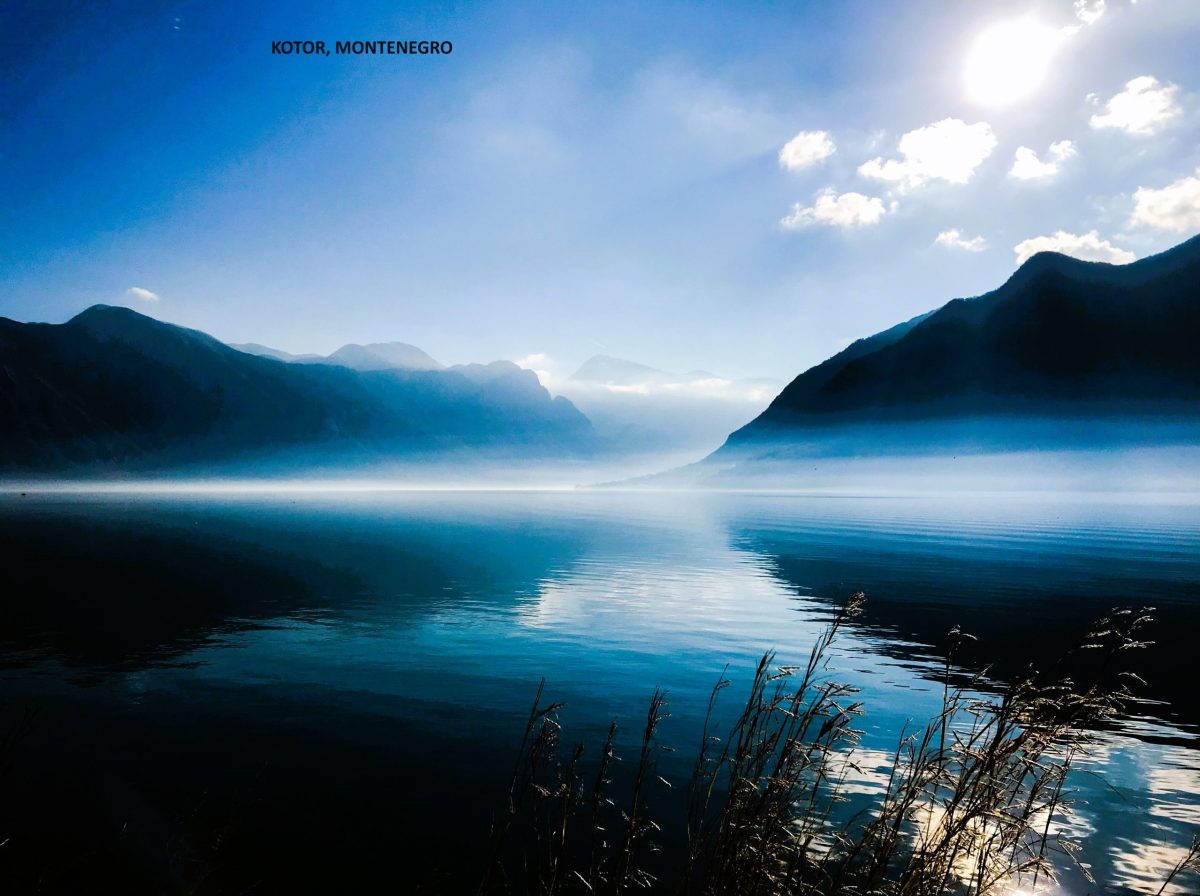I’d never heard of Marburg until we started looking for a place to overnight while on our way to Quedlingburg. We came for one day, stayed 4 and forgot all about Quedlingburg. That says it all. It’s a quintessential German city, full of character and points of interest and it’s beautiful. Moreover, during our visit we didn’t see or hear a single tourist. I guess not many other people have heard of the place either.
My initial exploration of the city commenced with a walk up through the Oberstadt to the Landgrafen Palace (the Landgrafenschloss) which towers over Marburg. It was a hot walk with the promised sun, that we’ve been chasing since leaving England, raising the local temperature to at least 30 degrees centigrade. The walk up was steep, through mostly narrow cobbled streets and even narrower lanes lined with colombage houses. Given how hot it was I was content to wander the castle grounds and view the outside of what is now, for the most part, a museum.
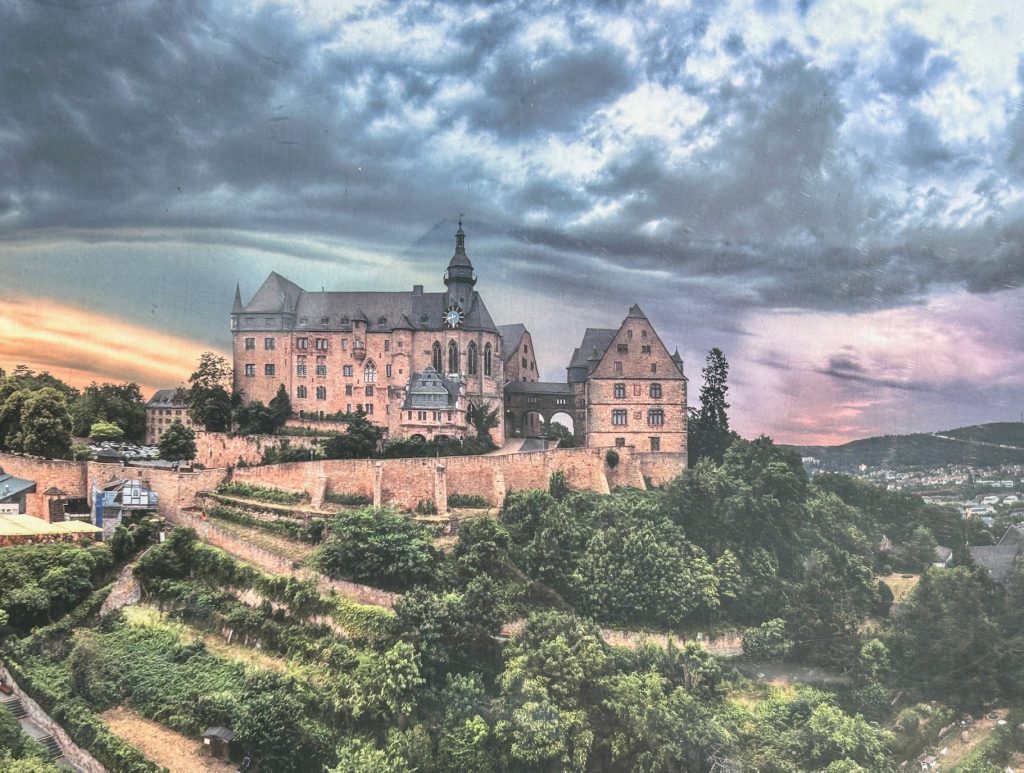
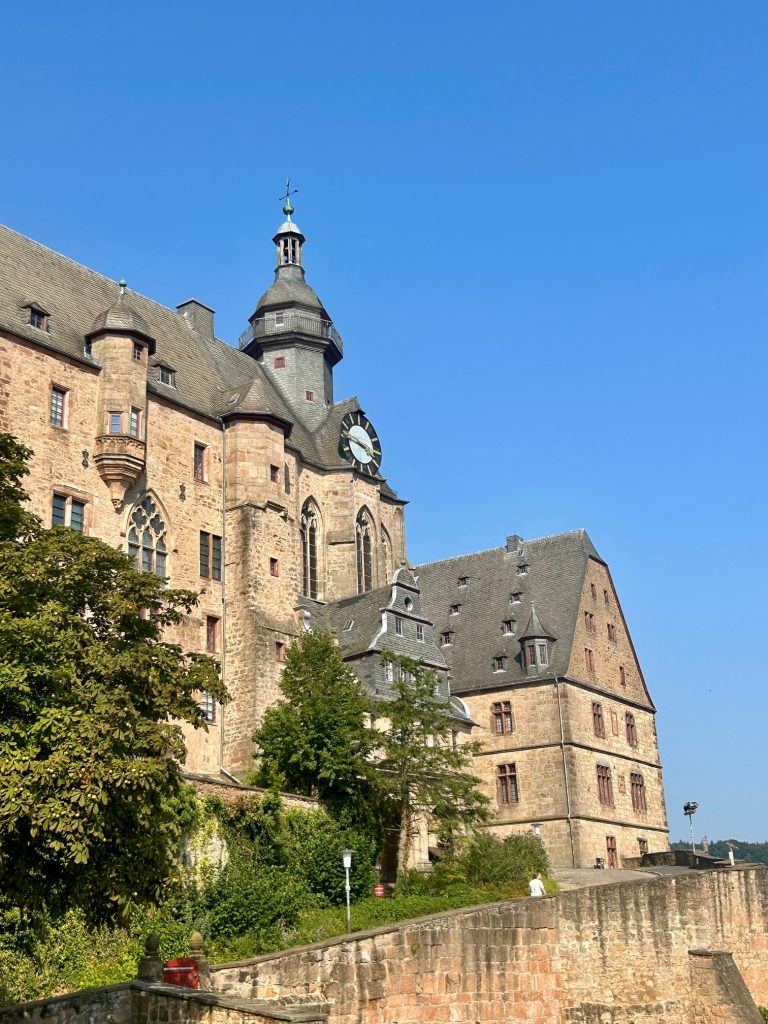
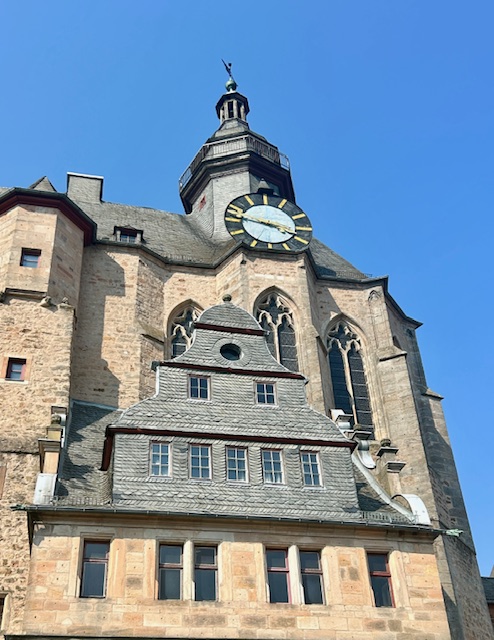
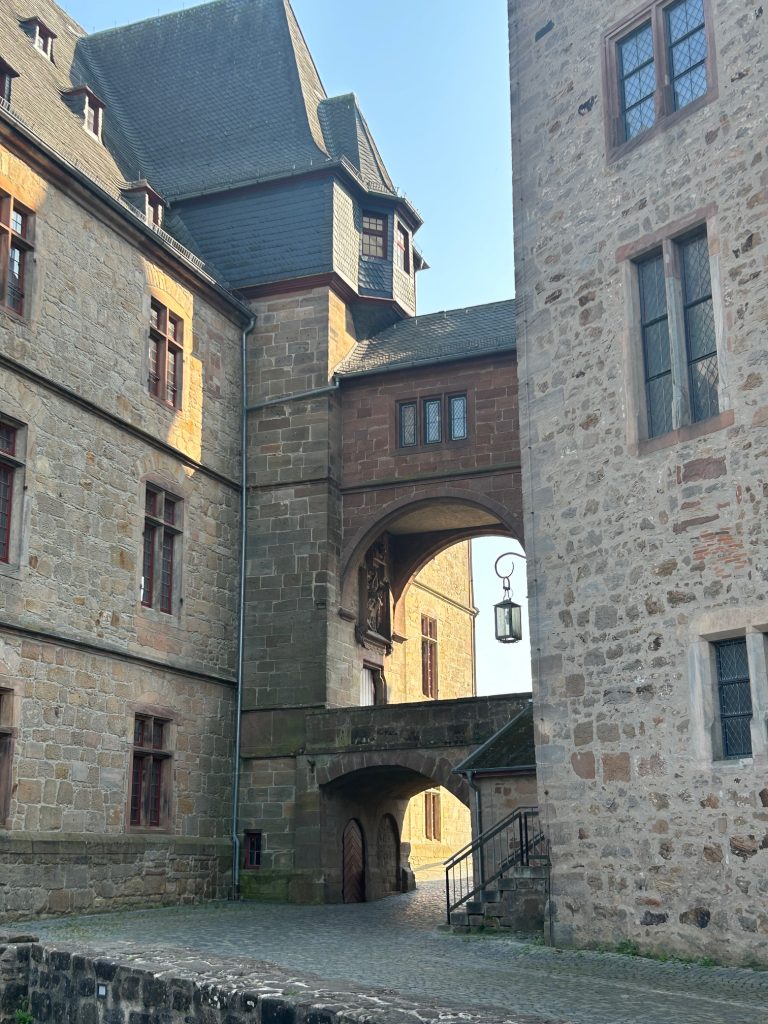
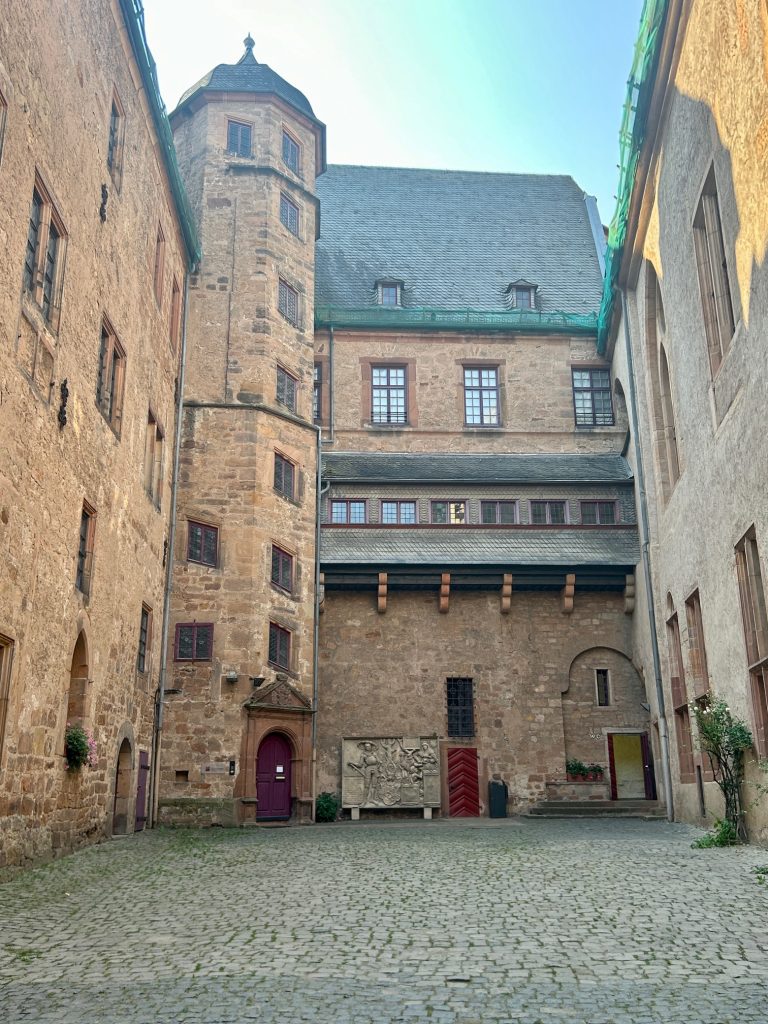

While walking to and from the palace I was intrigued by various interesting fairy tale features which adorn the route. They are a nod to the Brothers Grimm, Jacob and Wilhelm, who attended Philipps University in Marburg during the period 1802 to 1806. There are a number of these features dotted around the city and it is possible to obtain a map showing their whereabouts from the local tourist office. I didn’t have a copy of the map (I think it is called the Grimm Trail) but, even so, I stumbled across Cinderella’s shoe; the magic mirror from Snow White and the Seven Dwarves; the Frog Prince from the fairy tale of the same name; seven flies from the Brave Little Tailor and; a series of statues representing the Wolf and the Seven Kids.

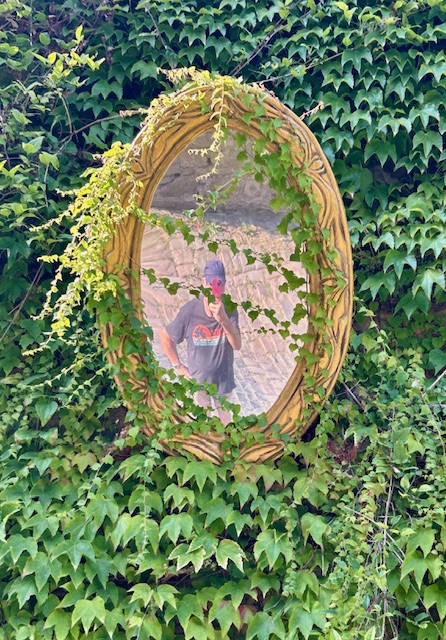
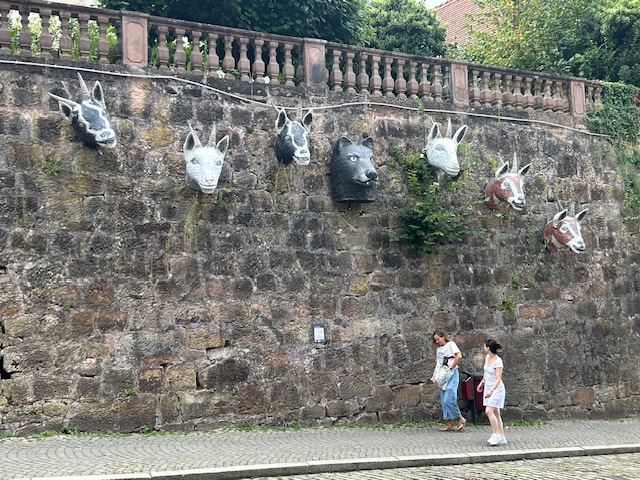
If it wasn’t so hot and if there weren’t quite so many steps in Marburg, I’m sure I would have stumbled upon more of the fairy tale features but, I needed a beer and so made my way back to the city’s Marktplatz where I’d previously noticed a bar selling Veltins, a Pilsner I had very much enjoyed at a beer festival in Mainz a couple of years ago.
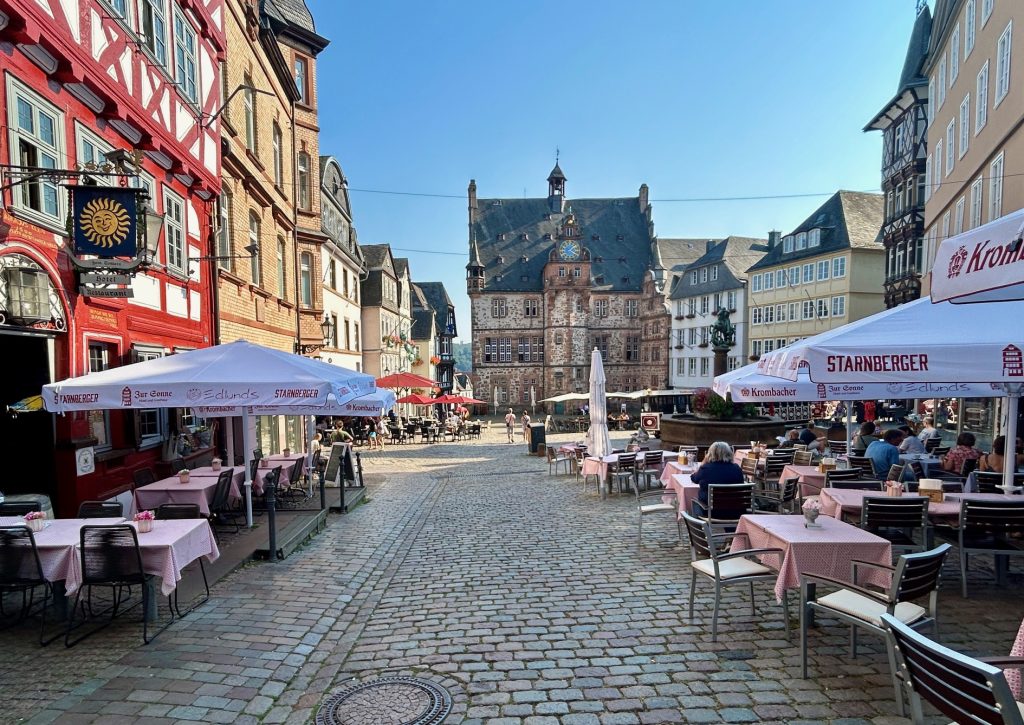
The Marktplatz, with it’s red sandstone Rathaus (City Hall) and the Saint George Fountain (so named because the fountain is topped by a statue of St George killing his dragon), is one of the prettier parts of Marburg and a popular meeting place among the city’s large student population. The 450+ year old Rathaus is by far the most picturesque building on the square. It is nothing less than splendid.
In a corner close to the Rathaus is a statue of Sophie of Brabant holding her son, Henry. Sophie was the daughter of the city’s most famous personage, Elizabeth of Thuringia (more about her later), and it was in this square during the War of the Thuringian Succession that Sophie proclaimed her son Henry the Landgrave of the independent territory of Hesse.
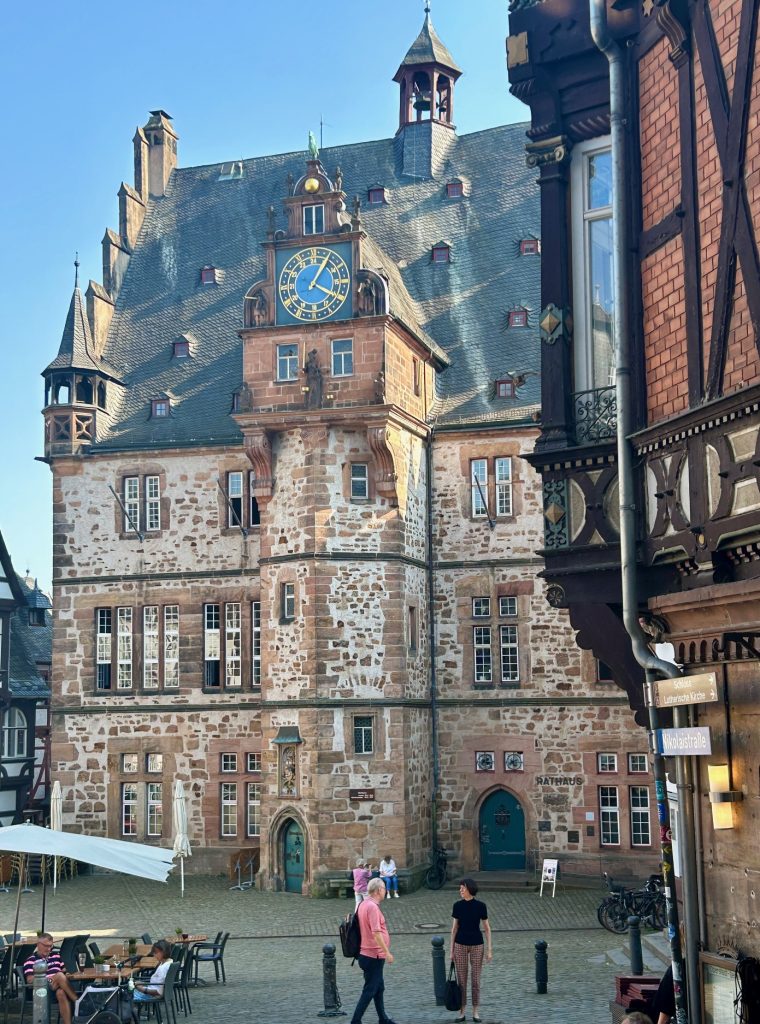
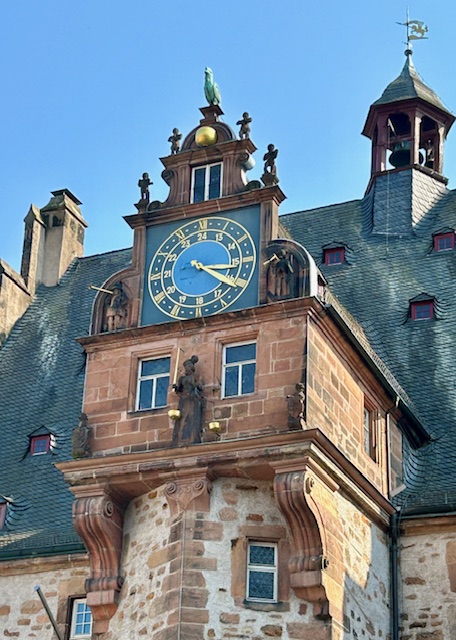
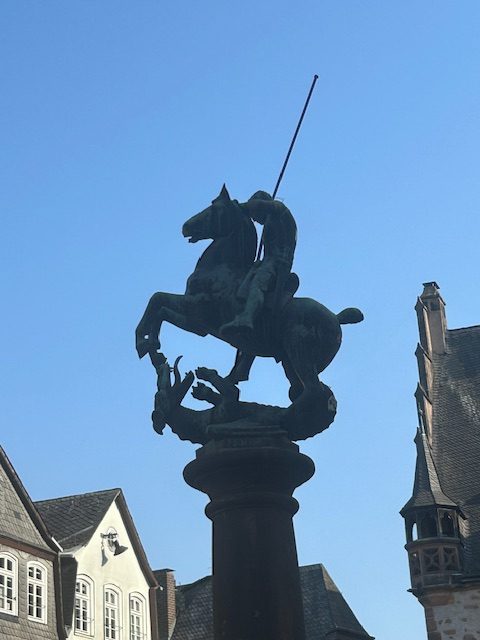

Marburg is a long established university city with a young age profile (23,500 of the 73,000 population are students) and the Marktplatz reflects that. It is very much a meeting place with it’s numerous cafes, bars and restaurants. I sat on the square nursing a couple of beers for a thoroughly enjoyable hour just watching the world go by and listening to a couple of buskers. They were good.
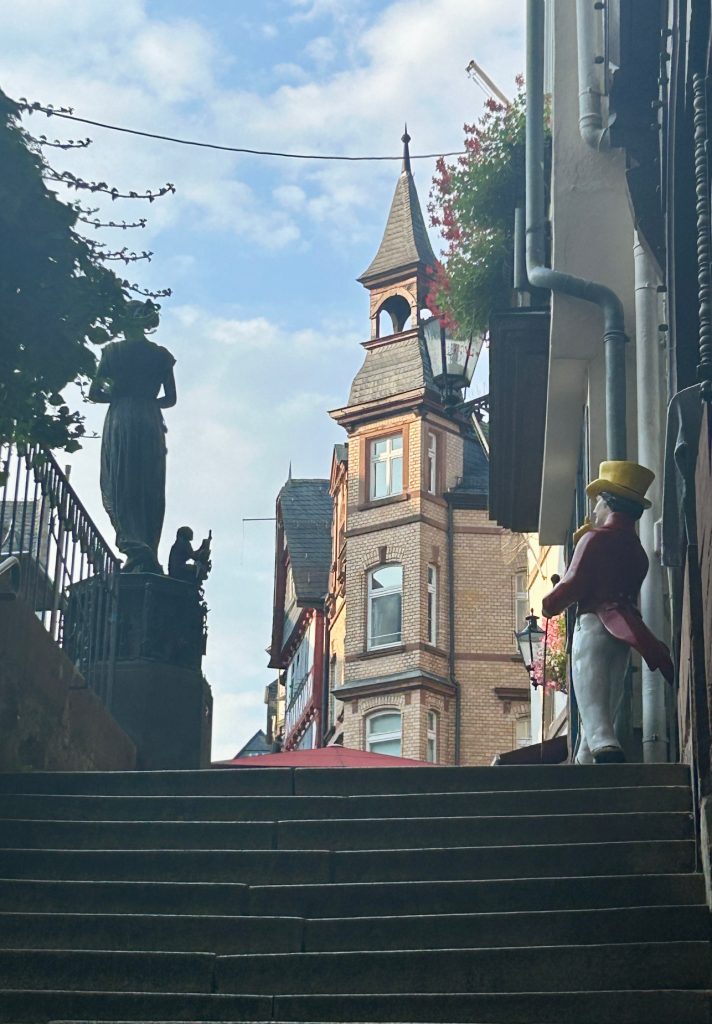
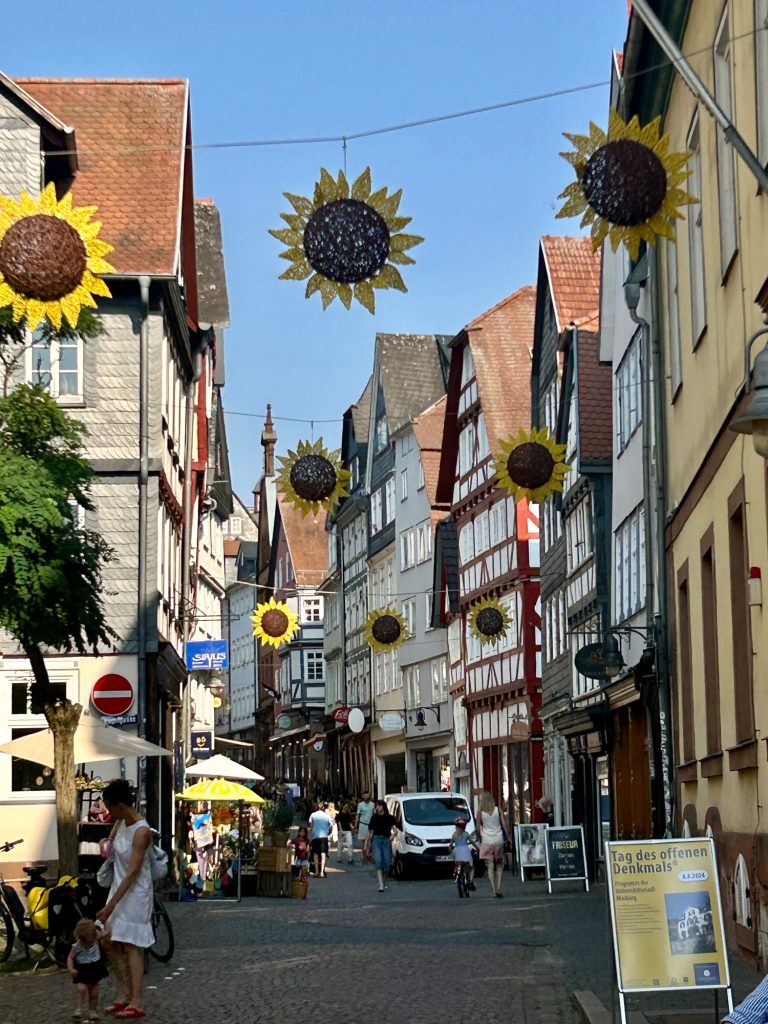
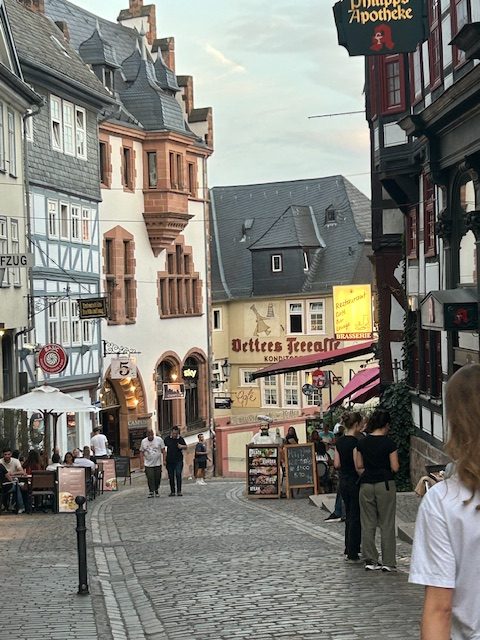
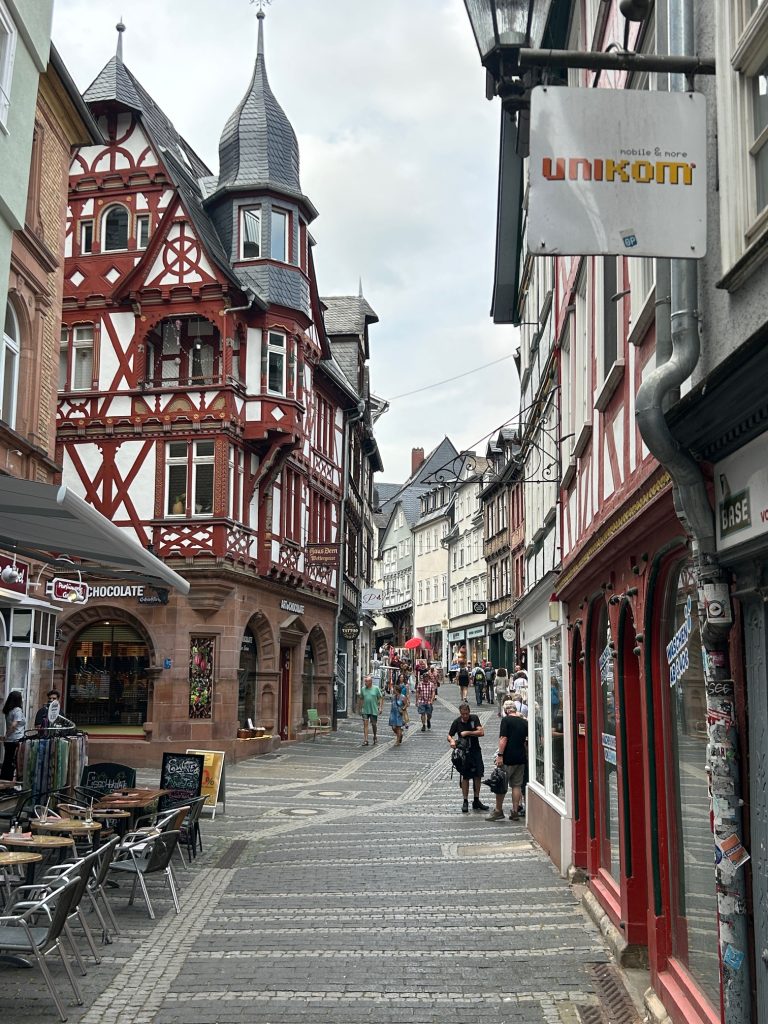
Vanya and I returned to the town later in the day to take dinner on the square but the buskers I had so much enjoyed earlier in the day were gone and in their place was an absolutely atrocious soul singer. Despite the lovely setting and the okay meal, I couldn’t get off the square quick enough but; we promised ourselves we would return the following night (and we did, with our friends Craig and Julie who arrived in Marburg that same day).

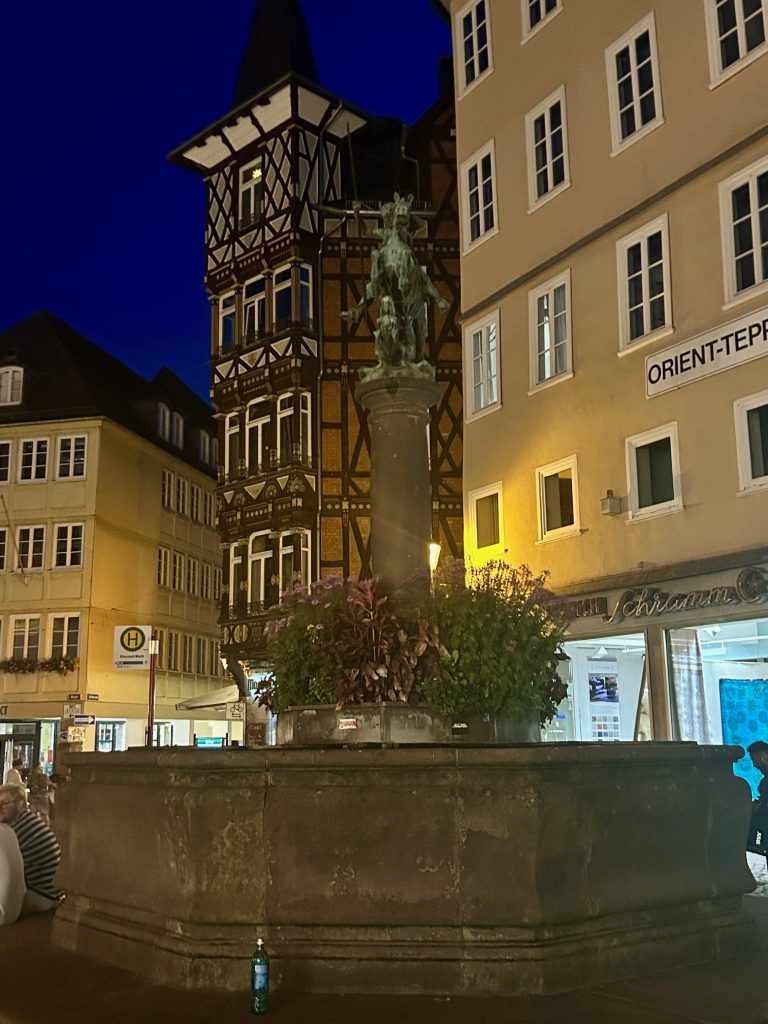
A little bit about two of the city’s more remarkable churches; the Lutheran Parish Church and the Elisabethkirche. The Elisabethkirche is the most impressive of the two but it was the Lutheran Parish Church (also known as the Marienkirche – Saint Mary’s in English) which captured my attention.
The Marienkirche is the slightly older of the two churches dating back to 1222 (compared to 1235 for the Elisabethkirche) but in 1527 the then Landgrave Philip the Magnaminous declared it to be the Protestant Parish Church of Marburg. It was to be the first Protestant church in Hesse and subsequently became known as the Lutheran Parish Church. However, it is not the church’s history which charmed me during my visit nor even it’s very obvious leaning spire. It was a young string ensemble practising Bach in readiness for weekend concert in the church. They were tremendous. It seems the church is well known for it’s acoustics and I note that the Bach evening will be followed by a soprano singer (Miriam Feuersinger) and, in October, a ‘Night of the Choirs’ which will see a minimum 15 choirs performing 20 minute sets. That’s with free admission too and such events will be something I will be checking out during any future visits to Marburg.
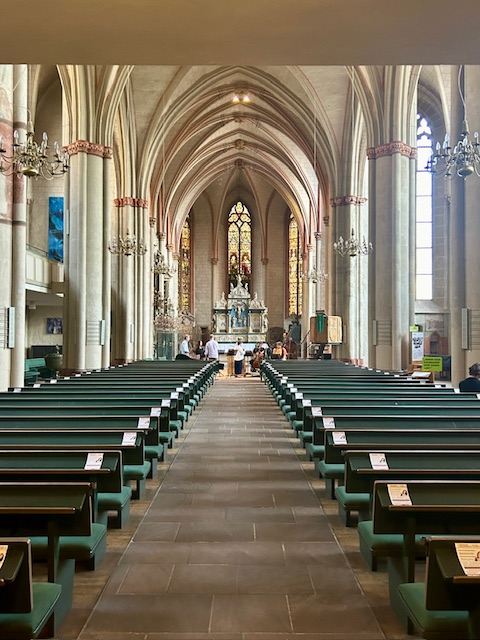

In contrast, the Elisabethkirche proved a total letdown as this most beautiful and historically interesting church was mostly closed for restoration purposes. This church was built to celebrate the short life of the Landgravine Elisabeth of Thuringia. She died in 1231 at the age of 24 but achieved enough in that short life to be sanctified by the Catholic Church just 4 years later. The church was built alongside a hospital (there’s little left of that now) which she created for the area’s sick and poor. Her relics are interred in a tomb in the church which is supposedly a masterpiece of intricate carving and medieval goldsmithing. Another particularly interesting feature of the church is the beautiful stained glass window depicting scenes from Elisabeth’s life. Created in 1957 it is considered to be one of the most celebrated modern stained glass windows in Germany.
Another interesting building just opposite from the front entrance of the Elisabethkirche is a small chapel, Saint Michael’s Kappelle. This chapel was commissioned by the Teutonic Order of Knights in 1270 to celebrate the lives of numerous pilgrims who, after coming to Marburg ill and hoping to be saved by Saint Elisabeth, died in the city and needed to be buried. The graveyard where these pilgrims are buried surrounds the chapel and it was used until about 1530 when Marburg turned Protestant.

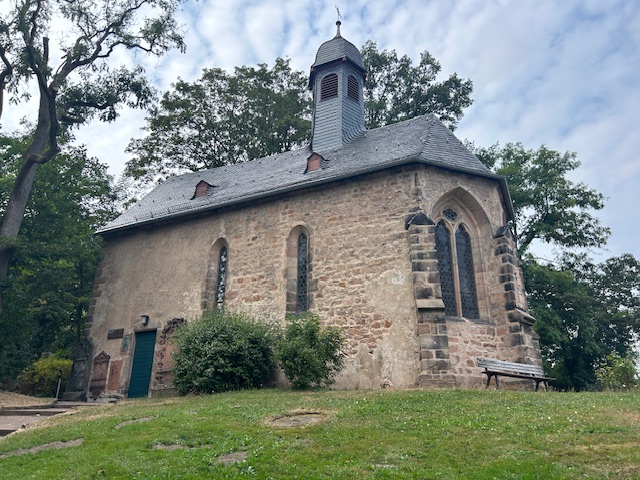
Talking of hospitals, shortly after arriving in Marburg I was interested to learn that between 1943 and 1945 (during World War II), the whole city became a hospital. It was decided that all government buildings near to a hospital or doctor’s surgery were to become hospital wards for wounded German soldiers and as many as 20,000 soldiers were held in these wards at any given time. Consequently, the city wasn’t bombed by the allies.
Well, that’ll do for now except to say that (a) we will definitely return to Marburg and (b) our stay was very much enhanced through our staying at a quite excellent campsite on the banks of the River Lahn (just 20 minutes walk from the city along an excellent cycle path) – the Campsite Lahnaue.
